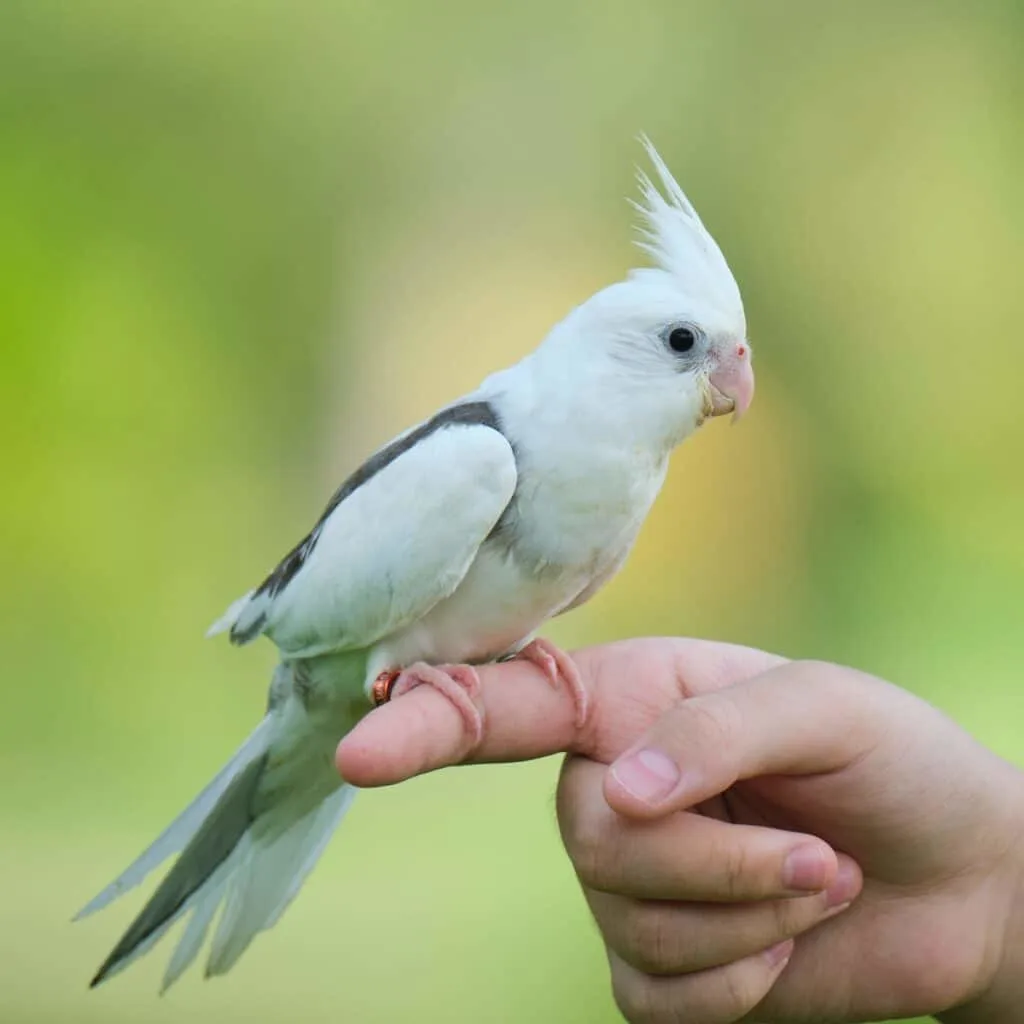When it comes to choosing a pet, many people gravitate toward the familiar – dogs, cats, and perhaps goldfish. However, the animal kingdom offers a diverse array of fascinating creatures that make wonderful companions but are often misunderstood or overlooked. These unconventional pets can bring unique joys and experiences to your home while challenging common misconceptions about their care, temperament, and behavior. From reptiles with surprising personalities to small mammals with complex social needs, understanding these animals better might just lead you to your perfect pet match. Let’s explore fourteen misunderstood animals that deserve consideration when looking for your next companion.
14. Rats Intelligent and Affectionate Companions

Rats suffer from perhaps the worst public relations problem in the pet world. Often associated with disease and filth, domestic rats couldn’t be further from their wild counterparts in temperament and cleanliness. Fancy rats are meticulously clean animals that groom themselves several times daily, similar to cats. They’re also remarkably intelligent, capable of learning their names, responding to commands, and solving puzzles that would challenge many dogs. Research has shown that rats are emotionally complex, experiencing joy, empathy, and even regret. They form deep bonds with their owners, actively seek affection, and can recognize human faces and voices. With an average lifespan of 2-3 years, rats offer a shorter commitment than many pets while providing exceptional companionship. Just remember they’re social creatures that should ideally be kept in pairs or small groups of the same sex.
13. Bearded Dragons The Gentle Reptilian Friend

For those who believe all reptiles are cold, unresponsive, and difficult to handle, bearded dragons present a compelling counterargument. Native to Australia, these distinctive lizards have become increasingly popular pets due to their docile nature and interactive personalities. Bearded dragons can recognize their owners, show preferences for certain people, and even enjoy gentle handling when properly socialized. Unlike many reptiles, they display a range of behaviors that owners can interpret, including arm-waving as a submission signal and beard-darkening when stressed or territorial. Their care requirements, though specific, are straightforward: they need proper UVB lighting, temperature gradients, and a diet that varies between vegetables and insects based on age. With lifespans of 8-12 years and personalities often compared to dogs in their responsiveness, bearded dragons offer long-term companionship that shatters the “cold and unfeeling” reptile stereotype.
12. Ferrets Playful Acrobats with Vibrant Personalities

Ferrets have long battled misconceptions about being aggressive, smelly, or wild animals. In reality, domesticated ferrets are playful, social creatures with distinct personalities that have been companions to humans for over 2,500 years. Their mischievous nature and boundless energy make them entertaining housemates. Ferrets sleep 14-18 hours daily but make the most of their waking hours with enthusiastic play and exploration. Their flexible spines allow them to perform acrobatic feats that few pets can match. While ferrets do have a natural musky odor from scent glands, this can be managed with proper care, regular bathing (though not too frequent), and spaying or neutering. They require dedicated time outside their cages daily, ferret-proofed spaces to explore safely, and ideally, ferret companions as they thrive in small groups. With lifespans of 6-10 years, ferrets represent a significant commitment, but their affectionate and playful nature makes them beloved companions for those willing to meet their specific needs.
11. Hedgehogs The Shy Insectivores with Unique Defense Mechanisms

Hedgehogs have gained popularity through social media, but their care requirements and natural behaviors are often misunderstood. These nocturnal mammals aren’t naturally cuddly pets—they’re solitary by nature and come equipped with thousands of spines as a defense mechanism. However, with patient handling and socialization, many hedgehogs become comfortable with their owners and develop distinct personalities. They require specialized care including proper temperature regulation (72-80°F), as they’re prone to attempted hibernation in cold environments, which can be fatal for pet hedgehogs. Their diet should consist primarily of high-quality cat food supplemented with insects, and they need exercise wheels specific to their anatomy to prevent foot injuries. Hedgehogs can live 4-7 years with proper care. It’s important to note that hedgehog ownership is illegal in some states and municipalities, so potential owners should check local regulations before bringing one home. With proper expectations and care, these unique animals can be rewarding companions for the right owner.
10. Ball Pythons The Gentle Giants of the Snake World

Ball pythons suffer from the widespread fear and misunderstanding that plagues many snake species. Named for their tendency to curl into a ball when stressed rather than striking defensively, these snakes are among the most docile and manageable reptile pets available. Native to West and Central Africa, ball pythons typically grow to 3-5 feet, making them a manageable size compared to many other constrictor species. They’re remarkably long-lived pets, with lifespans of 20-30 years in captivity, requiring a serious long-term commitment. Ball pythons are relatively low-maintenance, requiring feeding only every 1-2 weeks as adults and proper habitat setup with temperature gradients and hiding spots. Their care does require attention to humidity levels and careful handling, but they rarely bite when properly socialized. For those willing to overcome initial hesitations about snakes, ball pythons offer a calm temperament and fascinating behaviors that can challenge preconceptions about reptilian pets.
9. Guinea Pigs Social Creatures with Complex Communication Skills

Guinea pigs are often mistakenly considered “starter pets” that require minimal care and attention. In reality, these social rodents have complex needs and distinct personalities that make them engaging, if demanding, companions. Guinea pigs communicate through an elaborate vocabulary of sounds—from purring when content to “wheaking” when excited or hungry. They’re highly social animals that should never be kept alone; in Switzerland, it’s actually illegal to own just one guinea pig due to their need for companionship. Their dietary requirements are more complex than many realize, requiring constant access to timothy hay, daily vegetables, vitamin C supplementation, and specially formulated guinea pig pellets. With proper care, guinea pigs live 5-7 years, making them a significant commitment. They don’t typically enjoy being picked up but can form strong bonds with owners who respect their boundaries and interact with them at ground level. For those willing to invest time in understanding guinea pig behavior and meeting their specific needs, these expressive animals offer rewarding companionship.
8. Axolotls The Smiling Salamanders with Regenerative Powers

Axolotls, with their perpetual “smiles” and feathery external gills, have become increasingly popular pets, though their care requirements are often underestimated. These aquatic salamanders native to Mexico possess remarkable regenerative abilities, capable of regrowing limbs, parts of their heart, and even portions of their brain. Unlike most amphibians, axolotls remain in their larval form throughout life, a phenomenon called neoteny. They require specific water conditions, including cool temperatures (60-64°F) and minimal water flow, making their setup different from typical tropical fish aquariums. Axolotls are sensitive to water quality and should be housed in at least a 20-gallon long tank with appropriate filtration. They’re carnivorous, feeding primarily on worms, small fish, and specially formulated axolotl pellets. Contrary to common belief, axolotls shouldn’t be handled except when absolutely necessary, as human skin oils can damage their delicate skin and gills. With proper care, these unique creatures can live 10-15 years, offering long-term companionship for those fascinated by their otherworldly appearance and biology.
7. Tarantulas Misunderstood Arachnids with Fascinating Behaviors

Perhaps no pet on this list faces more fear and misunderstanding than the tarantula. Hollywood has portrayed these large spiders as aggressive, venomous monsters, when in reality, most species kept as pets are docile creatures that rarely bite. Their venom is typically comparable to a bee sting in severity, though individual reactions may vary. Tarantulas are remarkable low-maintenance pets, requiring feeding only once a week or less, proper humidity, and a secure enclosure. They’re incredibly long-lived; female specimens of some species can live 20-30 years in captivity. While not traditionally affectionate, tarantulas display fascinating behaviors including intricate web-building, complex hunting strategies, and detailed grooming rituals. Different species offer various temperaments and care requirements—terrestrial species like the Chilean Rose Hair are generally more docile and suitable for beginners, while arboreal species tend to be faster-moving and more skittish. For those who can overcome arachnophobia, tarantulas offer a window into complex invertebrate behaviors with minimal daily care requirements.
6. Chinchillas Dust-Bathing Divas with Specialized Needs
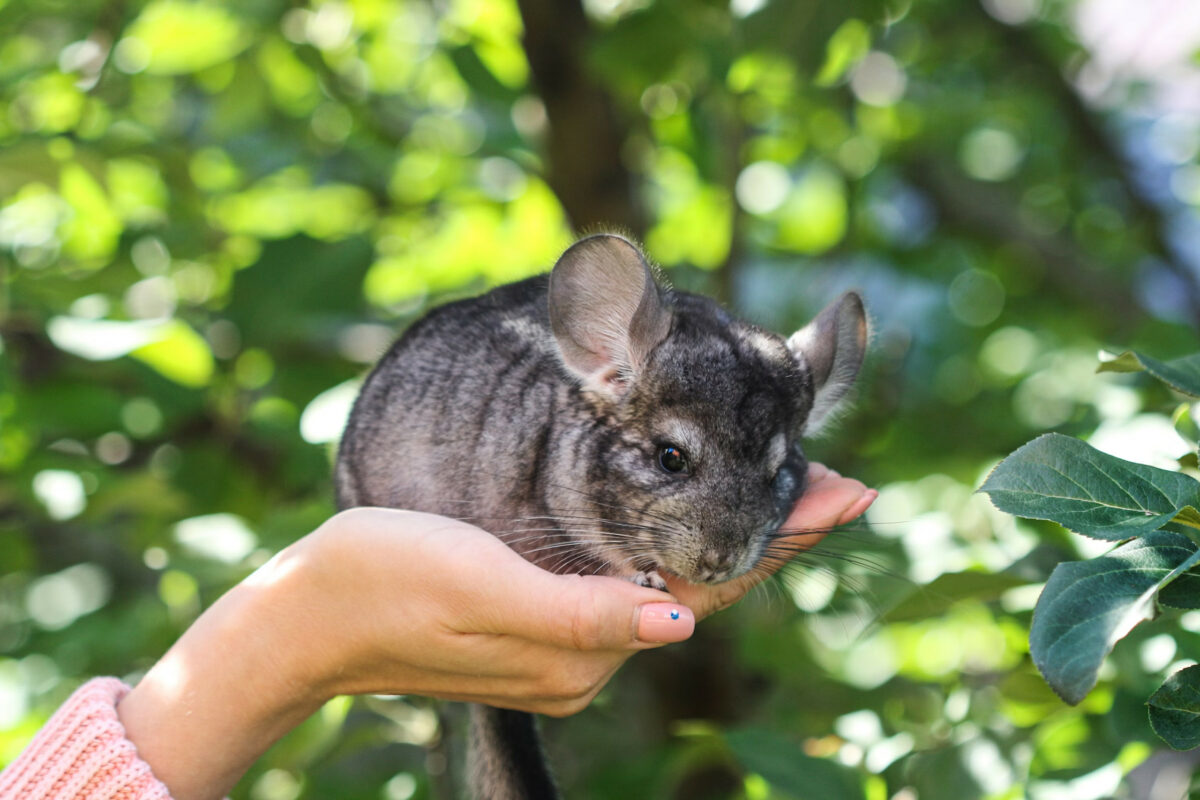
Chinchillas have gained popularity for their incredibly soft fur and charming personalities, but their specialized care requirements are often underestimated. Native to the Andes Mountains, these crepuscular rodents have the densest fur of any land mammal—up to 80 hairs per follicle—which requires unique maintenance. Chief among their distinctive care needs is dust bathing, where chinchillas roll in specialized volcanic ash to keep their thick fur clean and prevent oil buildup. They’re extremely heat-sensitive, requiring ambient temperatures below 75°F due to their inability to sweat. Chinchillas are highly active animals that need multi-level cages with platforms for jumping and exploring, as well as daily out-of-cage exercise in supervised, chinchilla-proofed areas. While they can be skittish initially, patient socialization can result in affectionate bonds with owners. Their dietary needs include specialized chinchilla pellets, unlimited timothy hay, and very limited treats, as their sensitive digestive systems can’t handle many foods that other rodents can eat. With 15-20 year lifespans, chinchillas represent a significant long-term commitment for those prepared to meet their specialized needs.
5. Leopard Geckos The Low-Maintenance Reptilian Companion
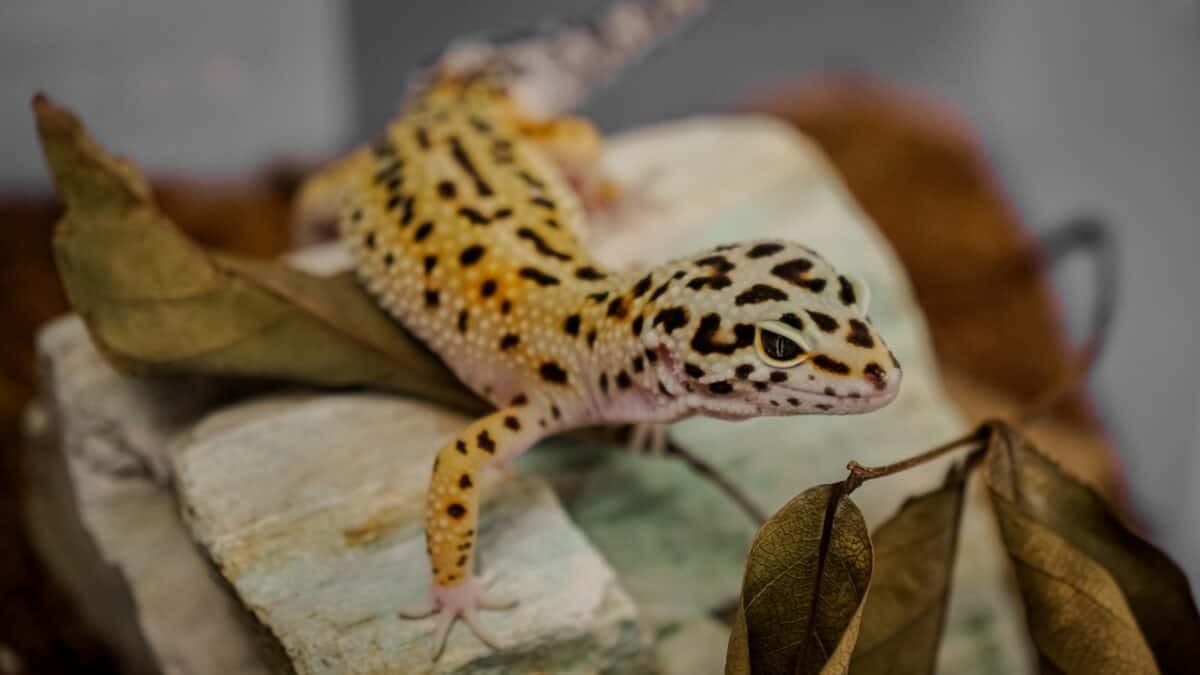
Leopard geckos challenge the common misconception that all reptiles require elaborate, expensive setups and specialized care. Native to arid regions of Afghanistan, Pakistan, and India, these charismatic lizards are among the most manageable reptile pets for beginners. Unlike many reptiles, they don’t require UVB lighting (though some evidence suggests they may benefit from it), and they thrive in simple tank setups with proper hide boxes, substrate, and temperature gradients. Leopard geckos are crepuscular, meaning they’re most active during dawn and dusk, making them ideal for owners who work traditional hours. Perhaps most surprisingly to those unfamiliar with reptiles, leopard geckos can recognize their owners, respond to handling, and even show preferences for certain people. Their expressive faces, with permanent “smiles” and movable eyelids (unusual among geckos), give them an approachable appearance that helps newcomers overcome reptile hesitation. With 10-20 year lifespans, leopard geckos offer long-term companionship with relatively straightforward care requirements, challenging the notion that reptiles are difficult or unresponsive pets.
4. Doves Peaceful Avian Companions with Rich Histories
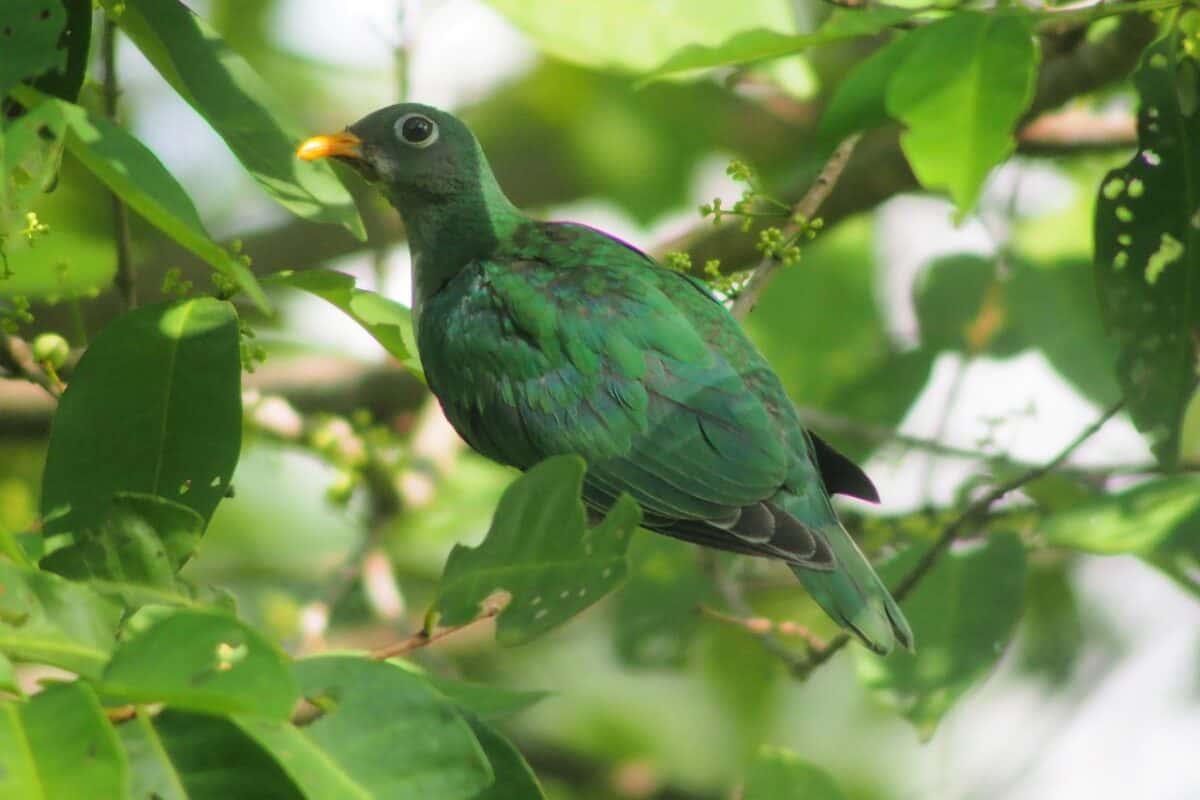
While many people consider birds as pets, doves are often overlooked in favor of more colorful or talkative species. These gentle birds have been companions to humans for thousands of years, with domesticated ring-necked doves and diamond doves making particularly excellent pets. Unlike many louder birds, doves produce soft, pleasant cooing sounds that won’t disturb neighbors or household members. They’re relatively low-maintenance compared to parrots, requiring less social interaction and mental stimulation, though they still benefit from attention and handling. Doves are generally calm, peaceful birds that can form strong bonds with their owners. Their dietary needs are straightforward, consisting primarily of quality dove/pigeon mix, fresh water, and occasional greens and fruits. With proper care, doves can live 10-15 years, providing long-term companionship. They do produce some dust from their feathers and require adequate space to fly and exercise, ideally in pairs as they’re naturally social birds. For those seeking a gentler introduction to bird ownership without the noise and complexity of parrots, doves offer a compelling alternative with rich symbolic and historical connections.
3. African Pygmy Hedgehogs Distinctive Personalities in Prickly Packages
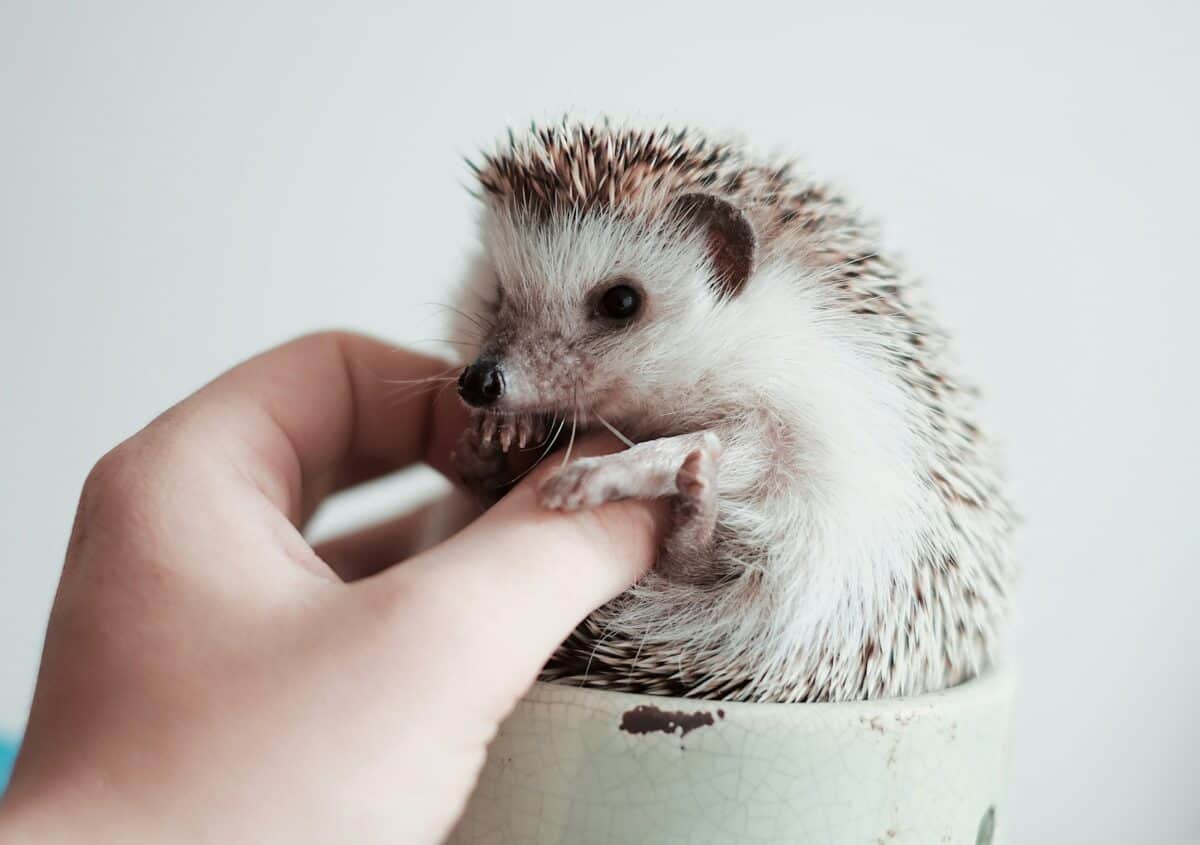
African pygmy hedgehogs have surged in popularity as pets, yet significant misconceptions persist about these unique animals. Many new owners are surprised to discover their nocturnal nature—hedgehogs are most active during the night and may spend much of the day sleeping. Each hedgehog has a distinctive personality; some are curious and outgoing while others remain shy throughout their lives. Contrary to popular imagery, hedgehogs rarely curl into perfect balls except when frightened, and handling a defensive hedgehog requires specific techniques to avoid their 5,000+ quills. Their diet in captivity should mimic their insectivorous wild diet—high-quality cat food supplemented with insects like mealworms and crickets. Hedgehogs require regular nail trims and foot inspections as they’re prone to a painful condition called “hedgehog wheel syndrome” from running on inappropriate surfaces. Perhaps most importantly, potential owners should research legality in their region, as hedgehogs are illegal to keep as pets in several states and municipalities due to concerns about potential invasive establishment if released. With proper care and environment, these unique animals typically live 4-7 years.
2. Gerbils Desert Dwellers with Strong Social Bonds
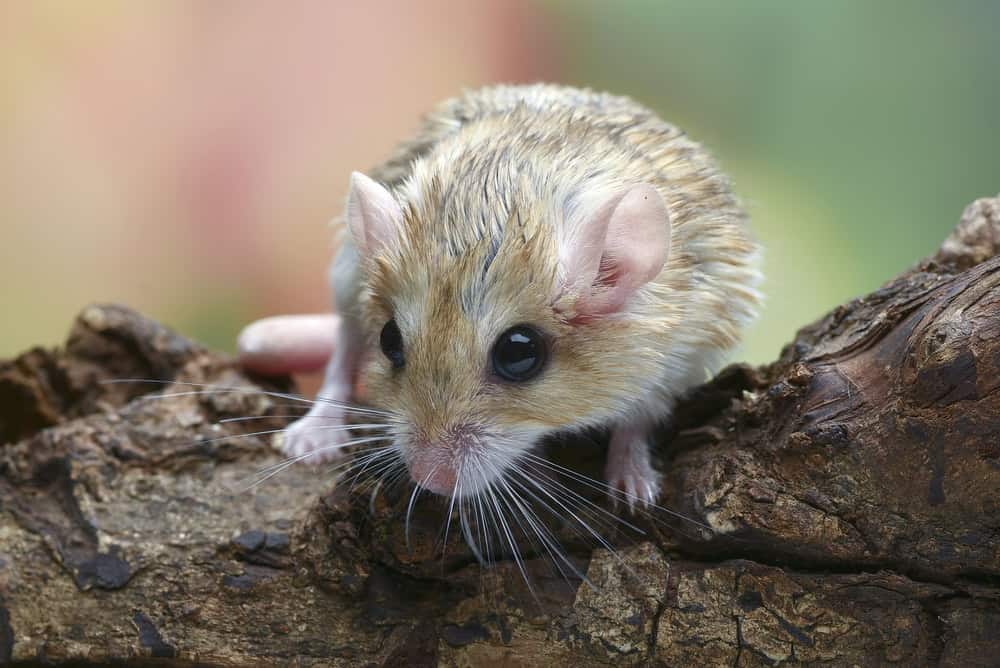
Gerbils are often confused with other small rodents like mice and hamsters, but these desert-adapted animals have distinct care requirements and social needs. Unlike solitary hamsters, gerbils are highly social creatures that should be kept in same-sex pairs or small groups. They form complex social hierarchies and engage in mutual grooming, playing, and sleeping together. Their desert origins manifest in unique behaviors like “sand bathing” and extensive burrowing—they’ll create intricate tunnel systems if given sufficient bedding depth (at least 6-8 inches). Gerbils are also notably cleaner and less odorous than many other rodent pets due to their efficient use of water in their native arid environments. They’re diurnal to crepuscular, meaning they’re active during the day and early evening when owners can interact with them. Their curious, energetic nature makes them engaging pets for those willing to provide proper housing and social structure. With 3-5 year lifespans, gerbils offer longer relationships than many small rodents. Their primary care requirements include deep bedding for digging, proper socialization with compatible gerbils, and protection from extreme temperatures.
1. Cockatiels Underestimated Avian Intellects
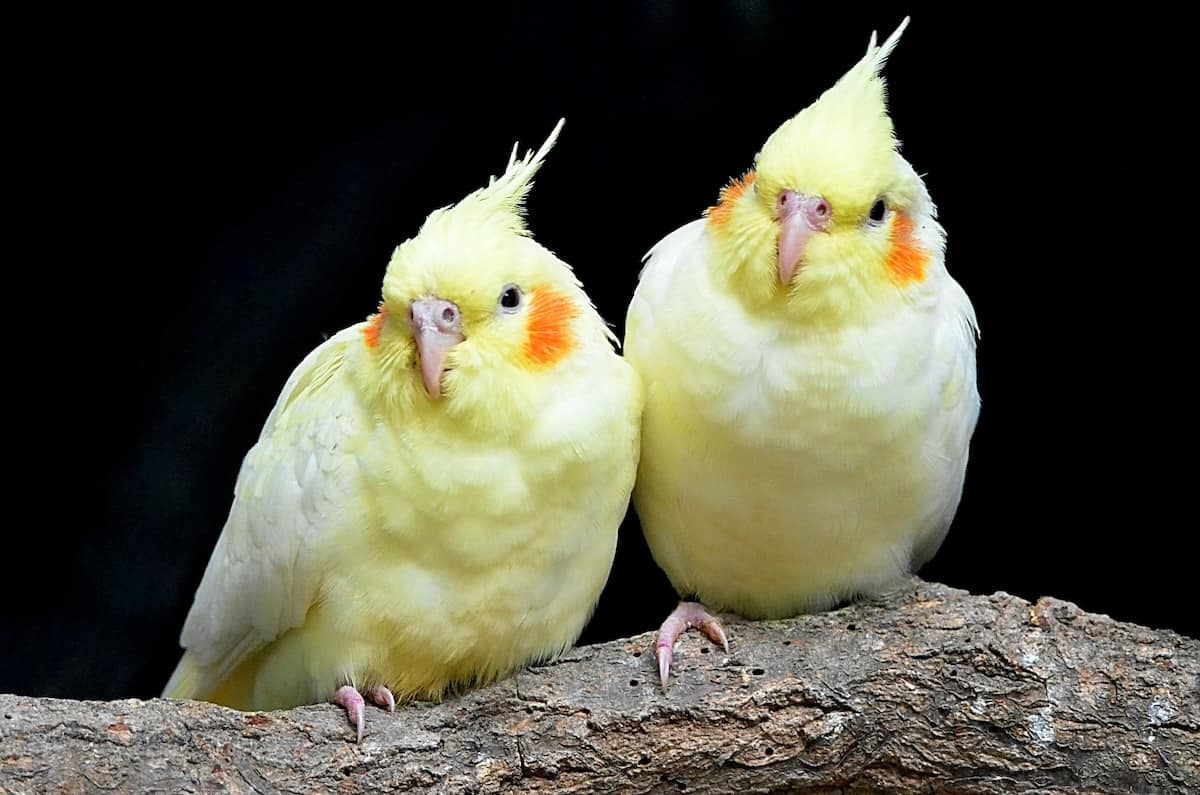
Cockatiels are often overshadowed by larger, more colorful parrot species, but these Australian natives offer exceptional companionship with more manageable care requirements than many of their relatives. Despite their smaller size, cockatiels possess impressive cognitive abilities—they can learn to whistle complex tunes, mimic household sounds, and even speak a limited vocabulary of words with consistent training. Their emotional intelligence is equally remarkable; cockatiels form strong bonds with owners and can accurately interpret and respond to human emotions. These birds are more noise-conscious than many parrots, typically producing pleasant whistling rather than ear-splitting screeches, making them apartment-friendly. Cockatiels require at least 2-4 hours outside their cage daily for exercise and socialization, a balanced diet of quality pellets supplemented with fresh vegetables and limited seeds, and plenty of toys for mental stimulation. With proper care, cockatiels typically live 15-20 years, sometimes reaching 25+ years, representing a significant but rewarding commitment. Their affectionate nature, manageable size, and impressive capabilities make cockatiels ideal for those interested in avian companionship without the intense demands of larger parrot species.
Conclusion: Looking Beyond Common Misconceptions

The fourteen animals featured in this article challenge long-held stereotypes and reveal the remarkable diversity of companionship beyond cats and dogs. Each species—whether feathered, scaled, or furred—offers its unique charm, intelligence, and emotional depth when understood and properly cared for. While these pets may require specialized environments, diets, or social considerations, they reward committed owners with unforgettable bonds, fascinating behaviors, and meaningful interactions. By looking past outdated myths and taking the time to learn about these misunderstood animals, potential pet owners can discover deeply fulfilling relationships with creatures that are too often overlooked. In expanding our view of what a pet can be, we not only enrich our own lives but also promote greater empathy and respect for the animal kingdom as a whole.
- 13+ Laugh-Out-Loud Pet Jokes Every Grandparent Should Have Ready - August 15, 2025
- 12 Creatures That Use Deception to Survive in the Wild - August 15, 2025
- 12 Birds With the Most Unique Calls - August 15, 2025

